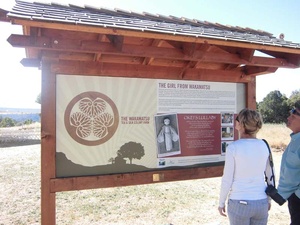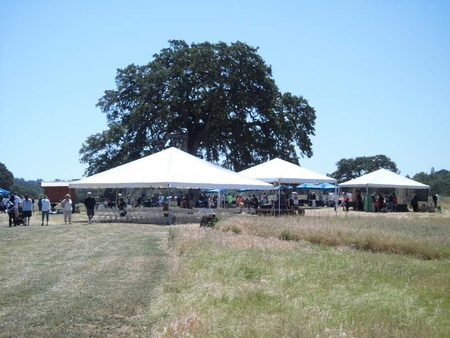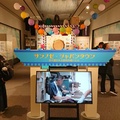Read Part 1 >>
Led by the Prussians across the Pacific Ocean
Aizu was invaded by government forces and Tsuruga Castle fell in the fall of 1868, and by the spring of the following year, a group of people left Aizu and traveled to California.
At that time, there was a Prussian man of Dutch nationality named Henry Schnell in the Aizu clan. He was an arms dealer, a military advisor to the Aizu and Yonezawa clans, and a staff officer of the Echigo frontier army of the Oshu-Uetsu Alliance. He led a group of about 20 people from Aizu and planned a colonization project in California.
His wife was Japanese (said to be the daughter of an Aizu or Shonai samurai), and Okei is believed to have joined the migration plan as a caretaker for the children they had.
The group left Yokohama on the US-registered ship China and arrived in San Francisco, then traveled up the Sacramento River by steamboat and then by wagon to Gold Hill in the wilderness of Coloma, near the gold mining area during the Gold Rush.
Schnell purchased land to create a farm, named it the "Wakamatsu Tea & Silk Farm Colony," and planned to raise silkworms and cultivate tea, etc. However, the business did not go well, and after about two years he left the colony, presumably to raise funds, saying he was going to Japan.
However, he never returned. The reason is unknown, but one theory is that he was killed.
In any case, Okei and the other Japanese were left behind and lived together for a while, but eventually they were separated. Fortunately, Okei was employed by a family that managed the land in the colony. Unfortunately, he soon fell ill and died.
Of course, there were Japanese who had traveled to the American mainland before this, such as the Tokugawa Shogunate's mission to America in 1860. There were also immigrants to America, known as "gannenmono," who went to Hawaii in the first year of the Meiji era to work.
However, only a small number of them are thought to have been immigrants to the American mainland, and they are believed to have been the first Japanese to travel to the mainland as part of an agricultural immigrant group rather than as individual laborers.
This historical fact alone is noteworthy, but the existence of the Wakamatsu Colony was unknown for a long time. There are no records of it in Japan either. It was Okei's Grave that brought its existence to light.
The mystery of the tomb is slowly unraveling
In the early summer of 1915 (Taisho 4), more than 40 years after Okei died and the colony disappeared, this grave was discovered by a Japanese farmer, Kokushi Tametaro, and Takeda Yukishiro, a reporter for the Japanese newspaper "Nichibei Shimbun". Kokushi had heard that the grave of a Japanese girl was nearby, so he told Takeda, and the two of them decided to visit.
At first, I didn't understand why there was a grave of a 19-year-old Japanese woman in such a place, but after visiting the nearby home of a white family called the Beerkamp family, I learned about Okei and the Wakamatsu Colony.
After the colony was dissolved, Okei was taken in by this family and worked there, and it was also discovered that a Japanese man, Sakurai Matsunosuke, who was also taken in by the family, and others built a grave for Okei on the site.
After this fact was announced in Japan, Japanese historian Takeshi Kimura traveled to the U.S. to investigate the matter. Meanwhile, in the U.S., Japanese-Americans, Japanese people, and Americans interested in this history discovered newspaper articles, census records, and other records from that time, and their research progressed.
In Okei's hometown of Aizuwakamatsu, the library director Takeda Masao and other education-related personnel have been sorting out historical facts, including Okei's identity.
The reason for this growing interest in the history of this small colony in both Japan and the United States may be due to its unique historical facts and the many mysteries surrounding it, but above all, it is the existence of the unfortunate Naoke, who became a symbol of the colony.
Historical preservation and festivals moving forward in Japan and the U.S.
For Japanese and Japanese-Americans in America, she could be considered a pioneer of immigration, and there was likely sympathy for her death in a foreign land at the age of just 19.
On the other hand, from the perspective of Aizu, as a fellow townsperson, there was also sympathy and consolation for this girl who had fled her hometown during the difficult times in Aizu from the end of the Edo period through to the Meiji era, and who had died alone and lonely.
In Aizu, Sasuma Furukawa, who had been researching Okei for many years, led a fundraising campaign for Okei's grave in 1957, mainly among people in the education sector, which bore fruit and led to the erection of a gravestone on Mt. Seaburi (in 1985 it was moved to its current location on the same mountain). In 1969, the Okei Memorial Society was established to preserve this historical achievement as a great achievement. In 1980, a group of people visited the grave, followed by a second group (1982) and a third group (1986).
Meanwhile, in California, the "Wakamatsu Colony Ruins," including "Okei's Grave," was designated a California State Historic Site in 1966. In 1969, the "Wakamatsu Colony 100th Anniversary Memorial Monument" was erected on the grounds of Gold Trail Elementary School, at the foot of the hill where the grave stands.
Also, a few years ago, an NPO for nature conservation called the American River Conservancy (ARC), with the help of donations from Aizu, purchased the surrounding area, including the land where Okei's grave is located, from a private company, and the entire area was turned into a park.
This prompted the festival to be held three years ago, and this year was the third time it has been held. It was planned to commemorate the unique cultural heritage of the Wakamatsu Colony in this area, and to look back on that time.
On the premises, there was an exhibition of Japanese origami, and on a temporary stage, there was a performance of samurai dressed in armor and taiko drums. In addition, the old farmhouse where the Okei once lived has been renovated and is now open to the public. In the garden, there is a large zelkova tree that is thought to have been brought from Japan and now boasts a majestic appearance.
In addition to ordinary people with an interest in Japanese culture, the venue was packed with many Japanese-Americans and Japanese people from the Sacramento area, and the tranquil hilly area was bustling with hundreds to a thousand people.
*This article is reprinted from JBPress (Japan Business Press) (published on June 17, 2013).
© 2013 Ryusuke Kawai, JB Press












